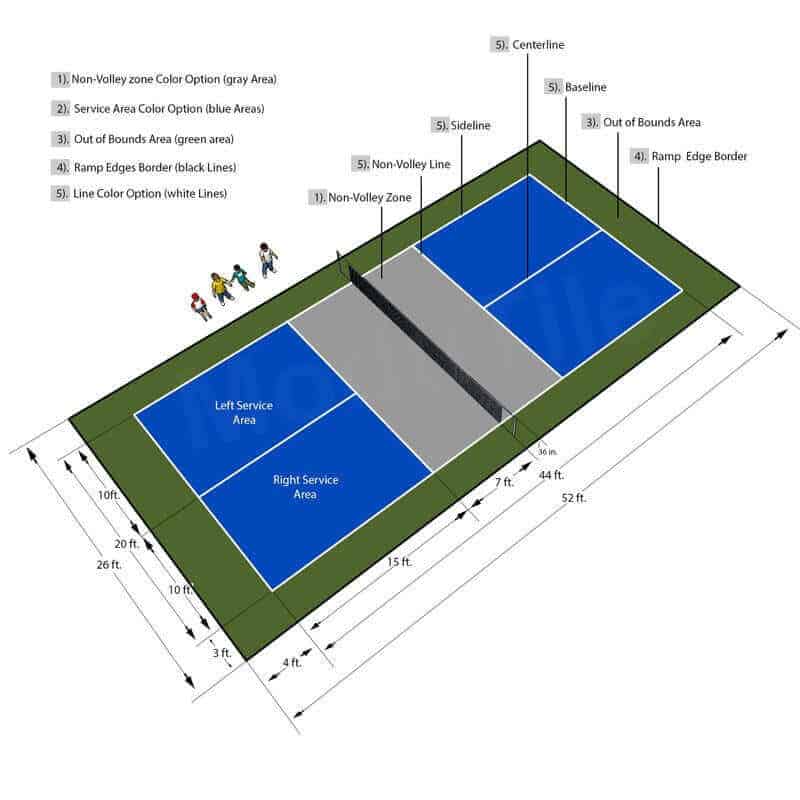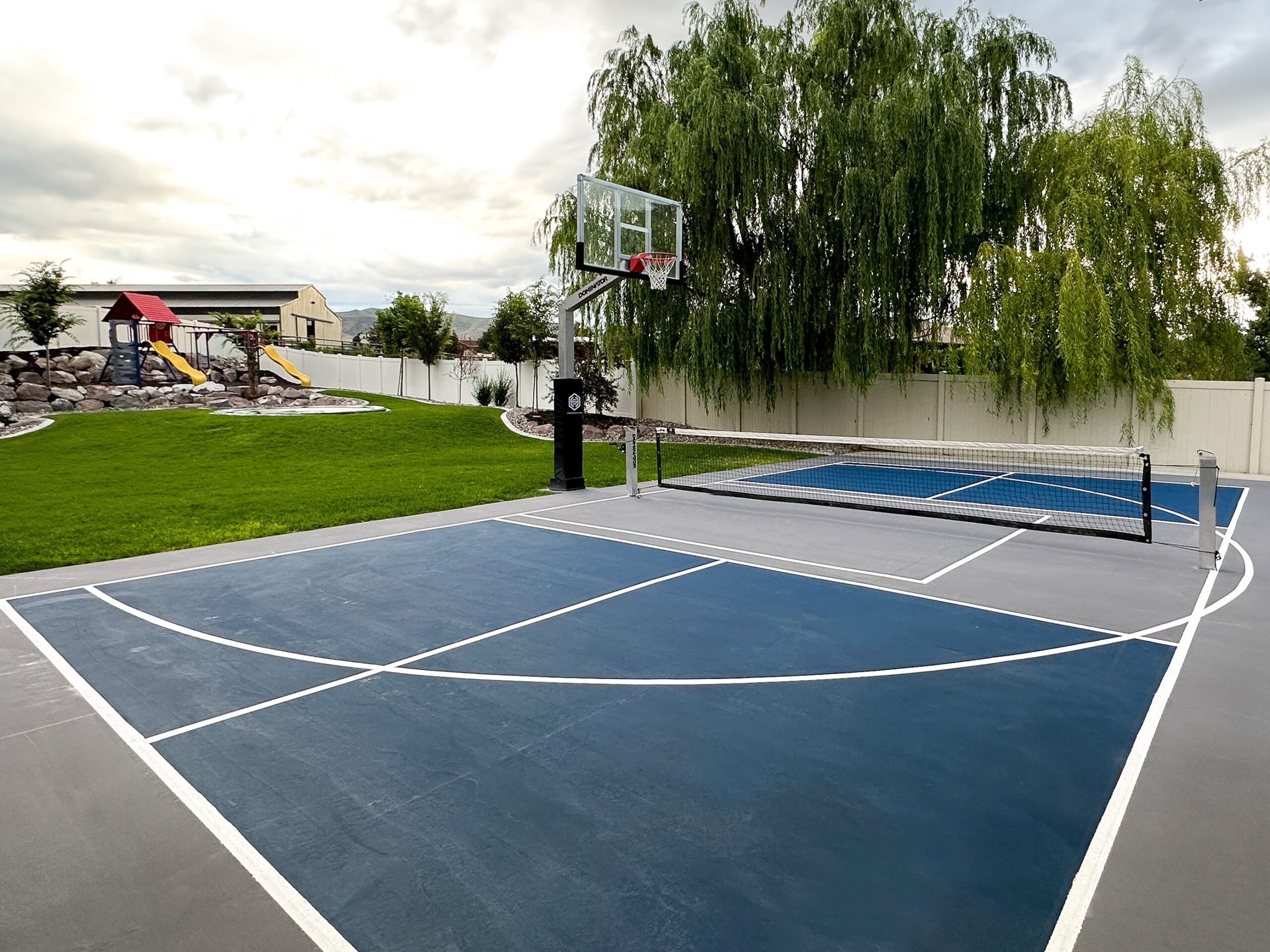Trick Consider the Building And Construction of Pickleball Judiciaries: From Site Choice to Last Surfaces
The building and construction of pickleball courts incorporates a range of important elements, beginning with the option of an appropriate website that balances ease of access with environmental factors to consider. Necessary aspects such as court measurements, surface area materials, and drain systems dramatically affect not just the high quality of play however also the long life of the center.
Website Choice Requirements
When starting the building and construction of pickleball courts, it is vital to pin down the site selection standards that will certainly make certain optimal playability and accessibility. The area must be easily obtainable for gamers, ideally located near suburbs or recreation center, to urge participation.
Moreover, the terrain should be degree and stable, as irregular ground can lead to safety hazards and influence gameplay. Adequate water drainage is likewise important; choosing a site with excellent water runoff will certainly aid keep court conditions during unfavorable weather condition.
One more essential consideration is the accessibility of utilities. Access to electrical energy and water is necessary for lighting and maintenance purposes. Additionally, proximity to auto parking facilities is essential, facilitating very easy access for gamers and viewers alike.
Environmental elements can not be ignored; natural color from trees can enhance player comfort, while exposure to dominating winds might interfere with play. Last but not least, zoning policies and community support must be thought about to make sure that the project straightens with local standards and receives the support it needs for effective execution. By thoroughly reviewing these criteria, stakeholders can create an inviting and practical setting for pickleball fanatics.
Court Dimensions and Layout
To make sure optimum gameplay and adherence to laws, the measurements and layout of pickleball courts should be very carefully specified. A typical pickleball court measures 20 feet in width and 44 feet in length for both singles and doubles play. The recommended layout includes a non-volley zone, commonly referred to as the "kitchen," extending 7 feet from the net on either side. This area is essential, as it influences player positioning and shot selection - Illinois and midwest.
The net elevation is established at 36 inches at the sidelines and 34 inches at the facility, producing a small dip that affects round trajectory. Court markings are just as crucial; lines must be 2 inches broad and distinct in shade to make certain exposure.
Furthermore, a buffer area surrounding the court is recommended, generally extending 5 to 10 feet past the sidelines and baselines to useful site accommodate gamers' motions and enhance safety and security. Appropriate layout and measurements not only guarantee conformity with official regulations yet likewise enhance the total playing experience, accommodating both leisure and competitive play. Mindful planning in these locations is vital to the successful building and construction of pickleball courts.
Surface Product Options
Choosing the right surface product for pickleball courts is vital for guaranteeing optimum player efficiency and safety. The selection of surface area can considerably influence gameplay, including round bounce, traction, and gamer convenience.
There are a number of alternatives available, each with its unique attributes. Asphalt is a popular option as a result of its toughness and reduced maintenance needs. It gives a solid having fun surface area that can endure numerous weather problems yet may need routine resurfacing.
Concrete is another commonly utilized product, offering exceptional long life and a smooth finish. It permits constant round bounce but can be hard on gamers' joints, making it much less preferable for long-term play without proper cushioning.
For those looking for boosted convenience and shock absorption, cushioned acrylic surfaces present a feasible choice. These surface areas incorporate a base layer with an acrylic topcoat, offering enhanced traction and a softer feeling, which is valuable for reducing the risk of injuries.
Lastly, synthetic grass is getting grip, especially for multi-purpose centers. Its adaptability and reduced upkeep requires make it an eye-catching alternative, though it might not give the very same round feedback as typical tough courts. Mindful factor to consider of these alternatives will certainly make sure an ideal playing atmosphere.
Drain and Lighting Considerations
Proper water drainage and efficient lighting are crucial elements in the construction of pickleball courts, dramatically affecting both playability and safety. Ample drain systems protect against water build-up, which can lead to unsafe surfaces and damages to the court structure.
Lighting is equally vital, especially for courts planned for evening use. The placement of lights components need to be purposefully intended to remove darkness and give even circulation of light throughout the court.

Last Coatings and Upkeep
After resolving water drainage and lights factors to consider, focus transforms to the last coatings and recurring upkeep of pickleball courts. Illinois and midwest. The option of surface material is essential, as it impacts both playability and resilience. Common alternatives consist of acrylic finishes and specialized sporting activities surfaces that provide optimal grip and padding. These finishes find out here now should be used in several layers to guarantee resilience versus climate aspects and wear.

Seasonal maintenance could consist of resurfacing every few years, depending upon use and environmental elements. Appropriately keeping nets, court lines, and surrounding locations is just as important to offer a risk-free and delightful playing experience. By purchasing high quality coatings and sticking to a structured maintenance schedule, facility owners can guarantee their pickleball courts stay in exceptional problem for several years to come.
Conclusion
Finally, the successful building of pickleball courts pivots on thorough focus to numerous key factors. Site selection ought to prioritize availability and surface stability, while court dimensions and design need to stick to ideal requirements for gameplay. The option of surface material dramatically influences player safety and performance. Efficient drain and sufficient illumination contribute to court long life and presence. Ultimately, high quality surfaces and a robust upkeep timetable are crucial for protecting the court's condition, enhancing the see this total experience for gamers and spectators alike.